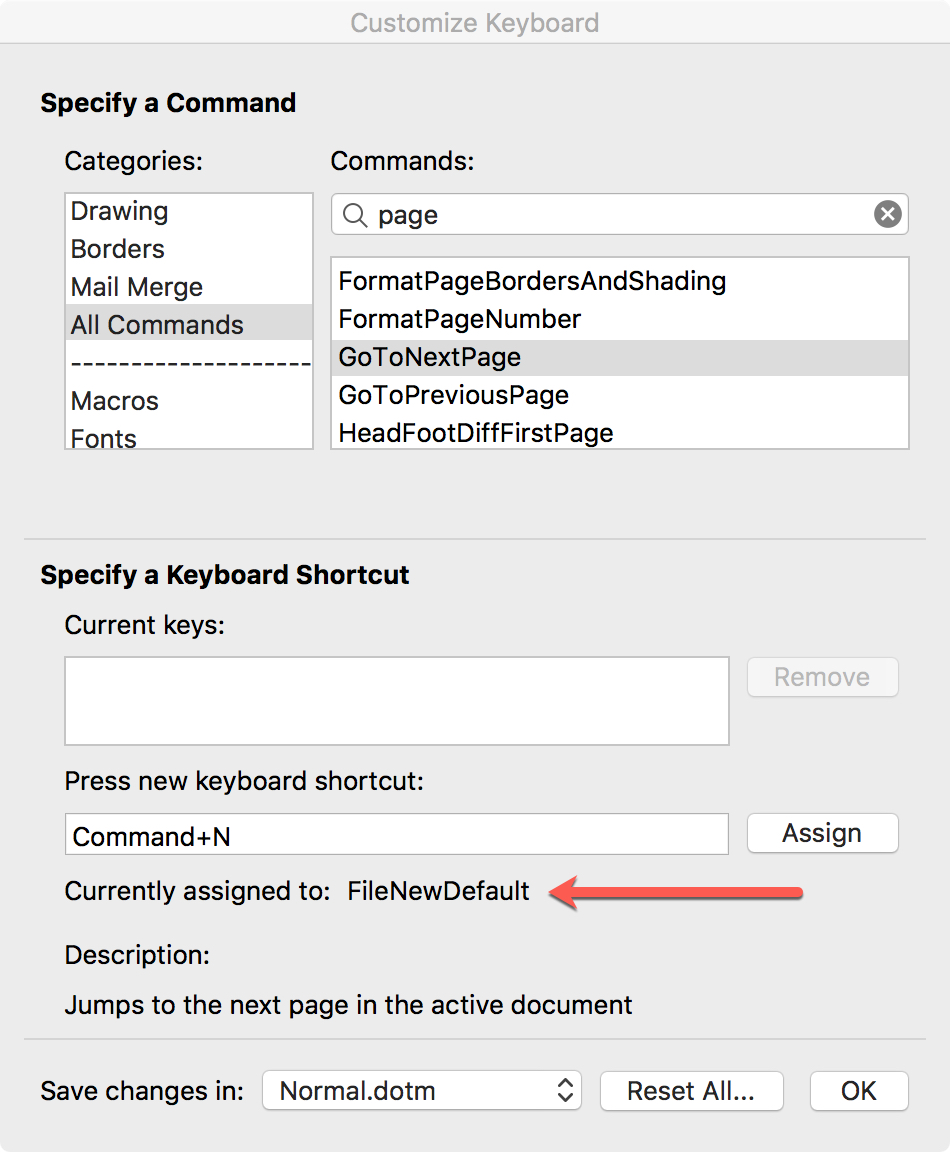

- #MICROSOFT WORD SHOTCUTS FOR MAC HOW TO#
- #MICROSOFT WORD SHOTCUTS FOR MAC MAC#
- #MICROSOFT WORD SHOTCUTS FOR MAC WINDOWS#
#MICROSOFT WORD SHOTCUTS FOR MAC WINDOWS#
For years, I really missed an MS Word for Windows shortcut ^⌥S which would bring my cursor directly to the style selection window and let me just type the name of the style I need. Normally I would take my mouse, go to the style selection window and scroll through dozens of styles to find the one I need. The default word template does not have keyboard shortcuts for such styles (although it does for more frequently used Normal and Heading 1-3). Unfortunately, this method has not been working perfectly for me because (a) one needs to type menu commands exactly as they appear in MS Word, even a smallest typo will lead to malfunction and (b) some of the things I want shortcuts for are not menu commands.įor example, I often want to change the style of a particular paragraph to one of the standard styles such as Title or Footnote Text. One way to do it is through System Preferences. The Keyboard Shortcuts tab in the Keyboard preference pane allows you to define shortcuts for performing menu commands from specific apps, including MS Word (see example in the screenshot below). Fortunately, there is a way to define keyboard shortcuts for most frequent tasks. Some of those are listed by Microsoft, but many of my favorite commands are not in this list.
#MICROSOFT WORD SHOTCUTS FOR MAC MAC#
Unfortunately, keyboard shortcuts in Word on Mac are significantly different from those in other Mac apps and in Word for Windows. If you have to edit texts in MS Word you might as well do it smoothly and efficiently, save time and preserve focus by replacing mouse movements with keyboard shortcuts. The good thing about this function is that you can reference an exponent in another cell.Despite alternatives to Microsoft Word it is not possible to completely avoid using it in academic work on a Mac.

The Power function takes two arguments: the base number (any real number), and the power/exponent (the number that determines how many times the given number will be multiplied by itself). The Power function is a mathematical function in Excel that calculates and returns the result of a number raised to a power of another number. If you want to calculate exponents rather than just display them in your Excel worksheets, Excel provides a few different ways to do that. This, at times, is referred to as taking the power of numbers where the term power refers to the number of times the number is multiplied. We learned from school that exponents are used for multiplying a number by itself a given number of times. What use is the exponent, especially in Excel, if it cannot calculate?
#MICROSOFT WORD SHOTCUTS FOR MAC HOW TO#
How to calculate exponents in Excel (Taking Powers) On the Font tab, in the Effects group, select the Superscript checkbox and click on the OK button.

To do so, select the content in the cell that you want to superscript and press Ctrl+Shift+F to display the Format Cells dialog. In the next section, let’s see how you may type exponents that can be calculated in Excel.īonus Tip: You can also display cell content as superscripts using the Formatting tools in Excel. However, using the equation approach, you cannot use the do calculations since they are placed on shapes and not in the cells. This is how you may type Exponents as they are in Excel. Then click on the superscripted placeholder box and type 2 as the exponent. For instance, to type 8 to the power 2, click on the first placeholder box and type 8 as the base number. Click to select the placeholder boxes and type the contents as required.


 0 kommentar(er)
0 kommentar(er)
